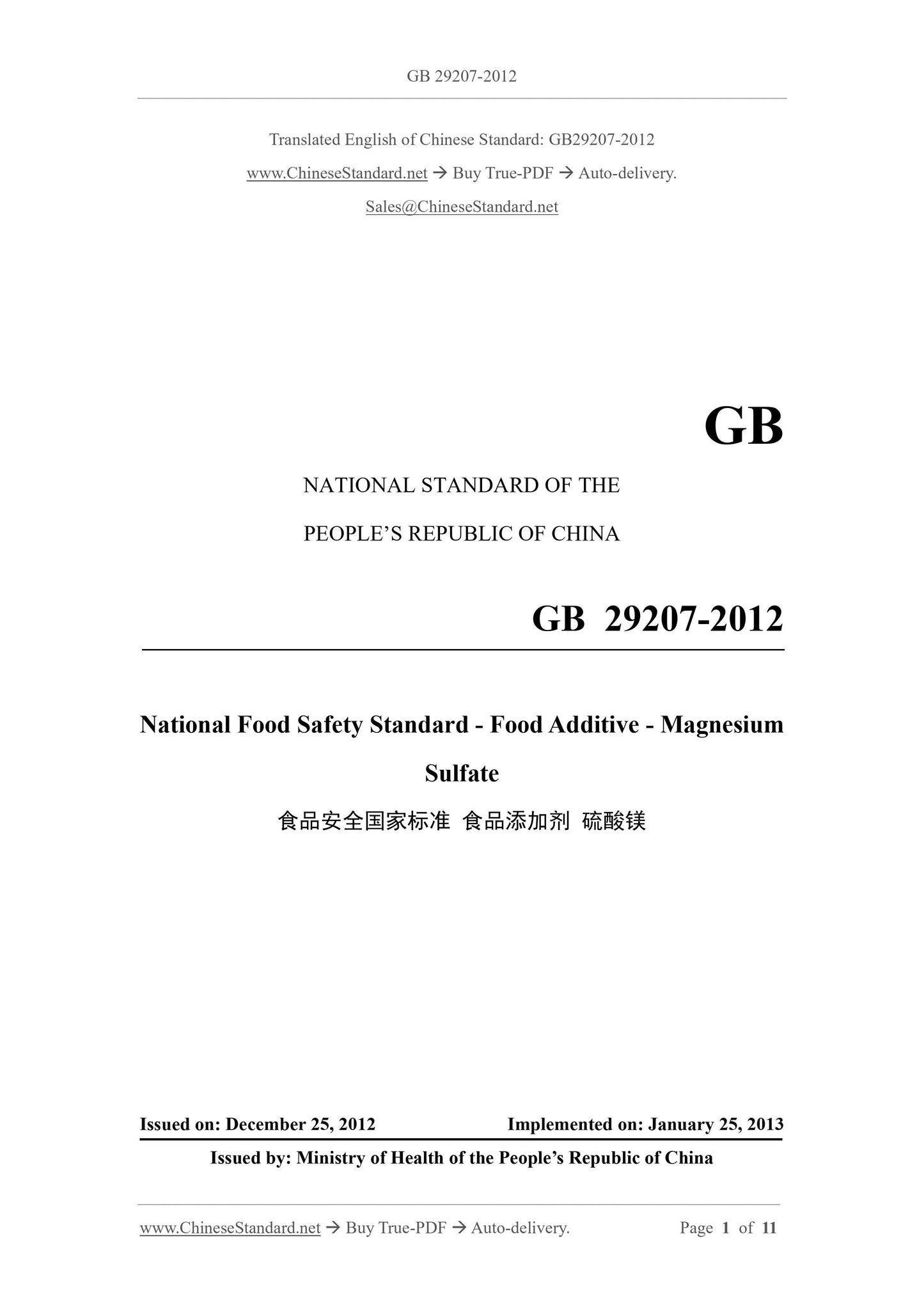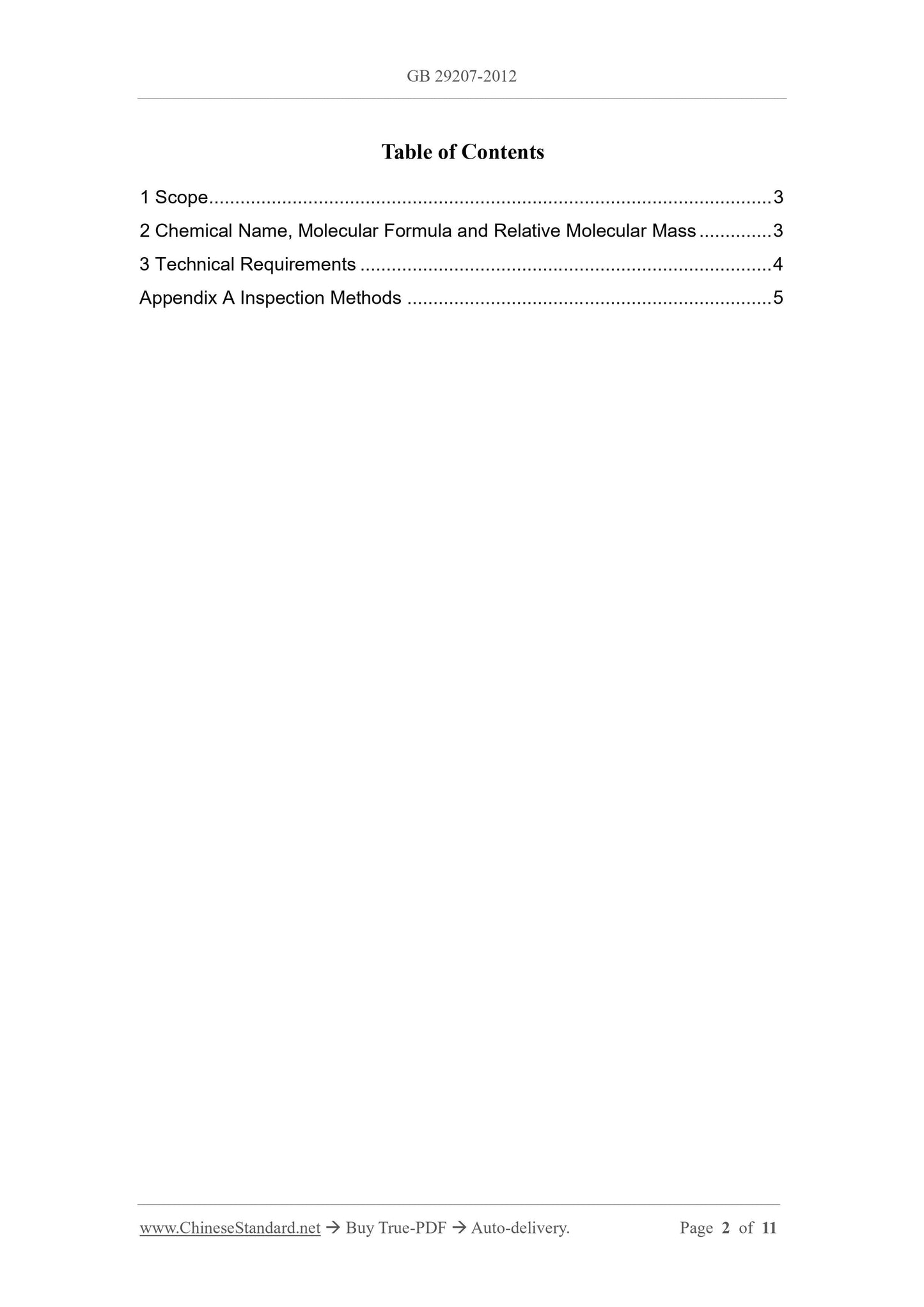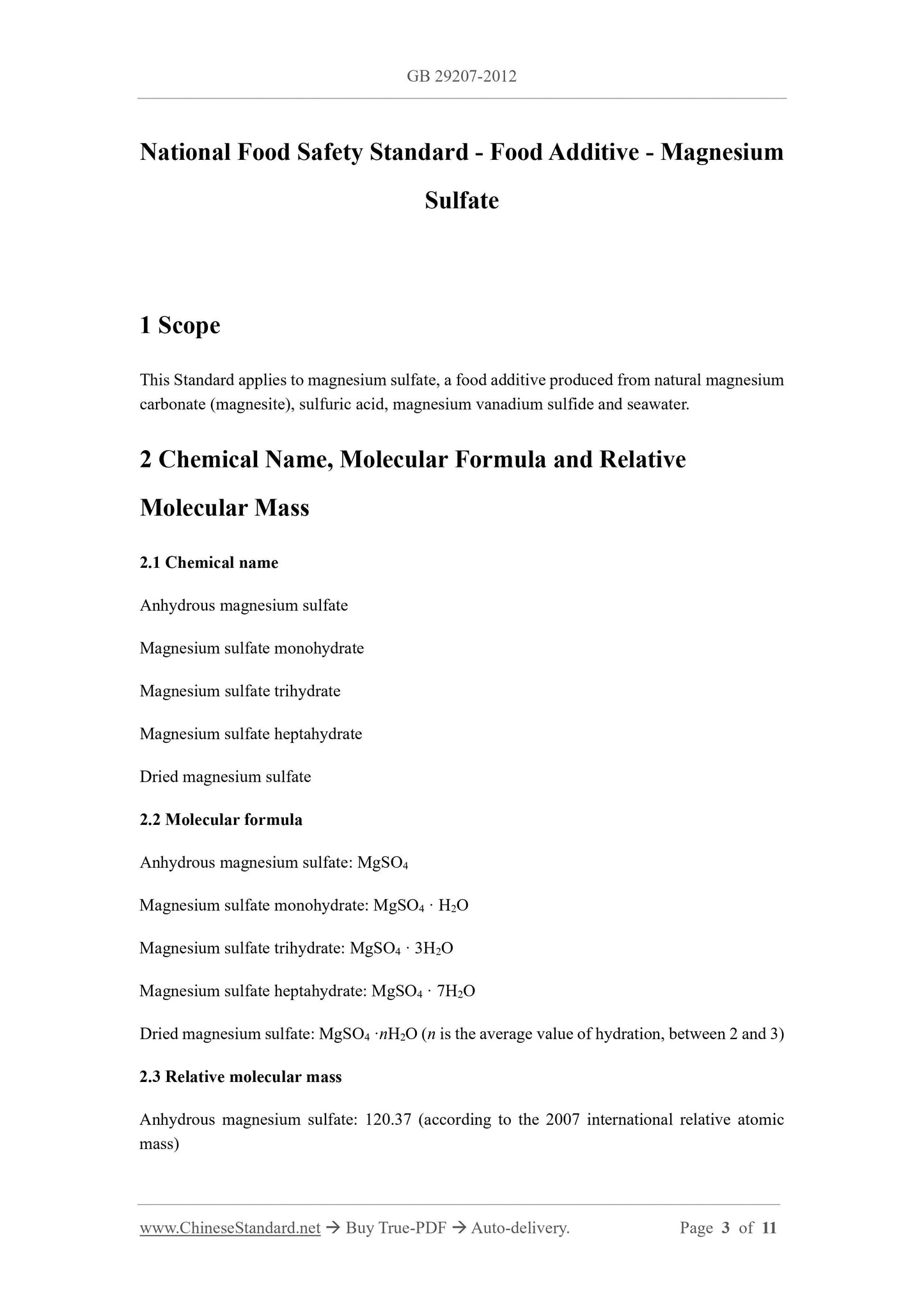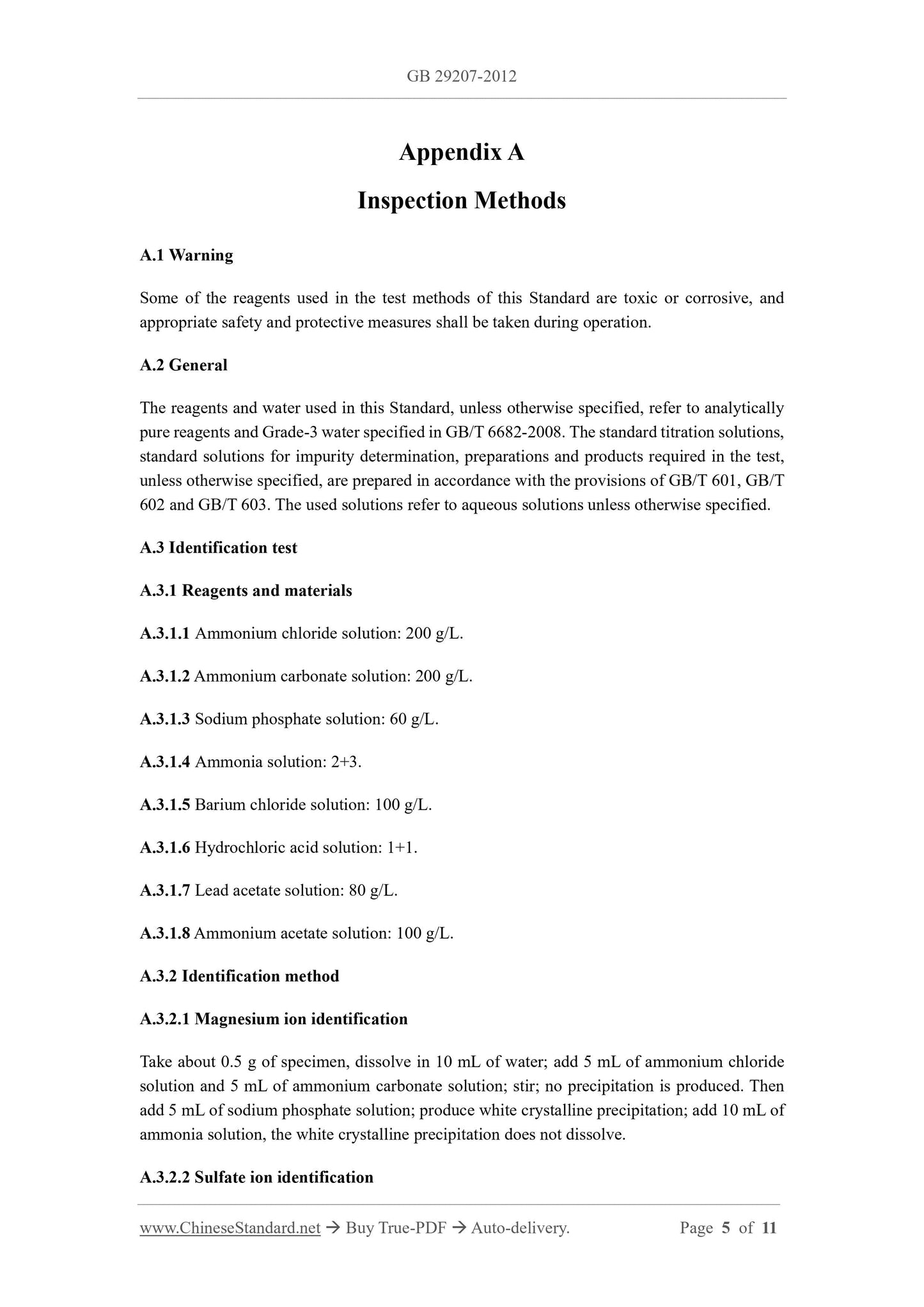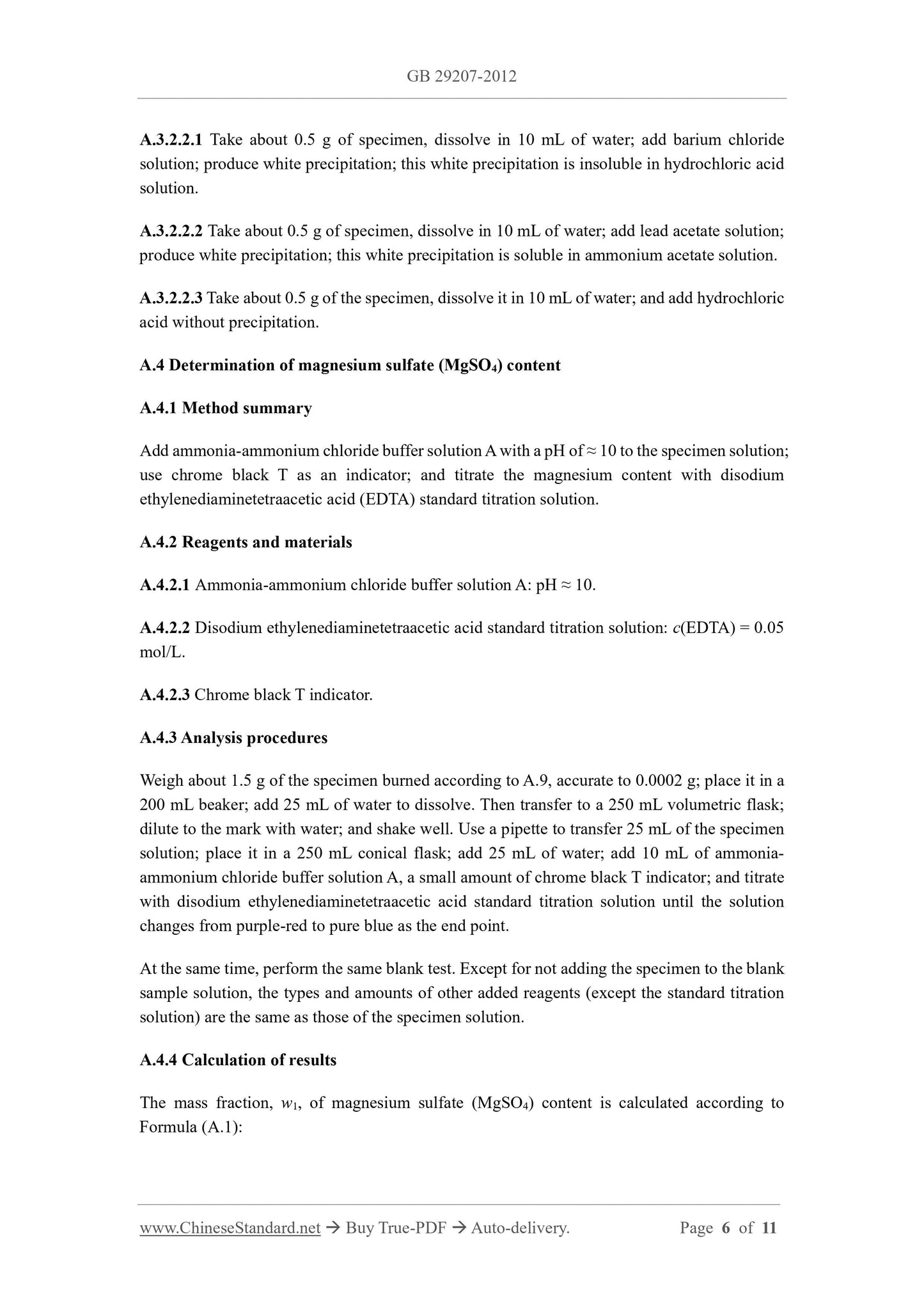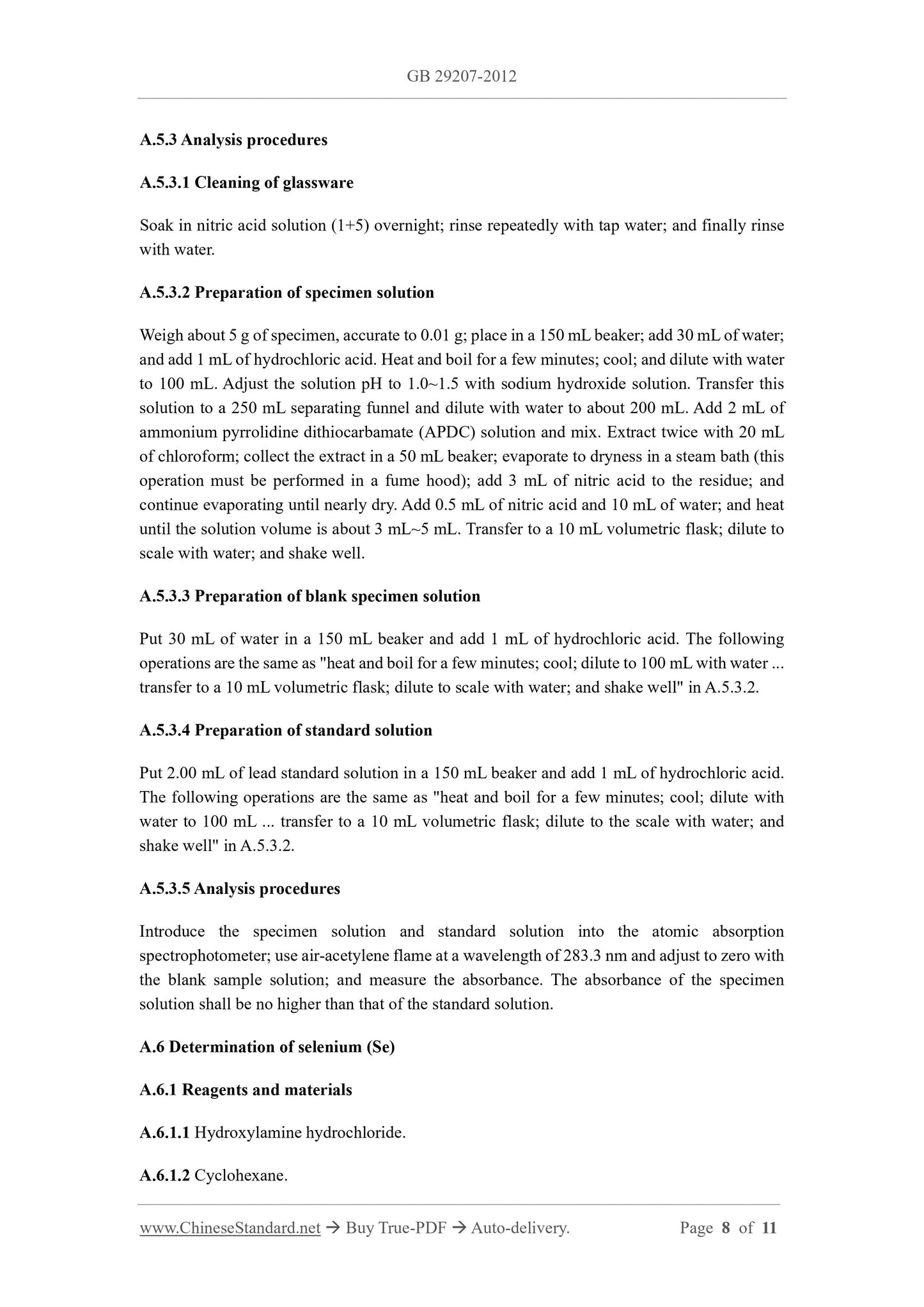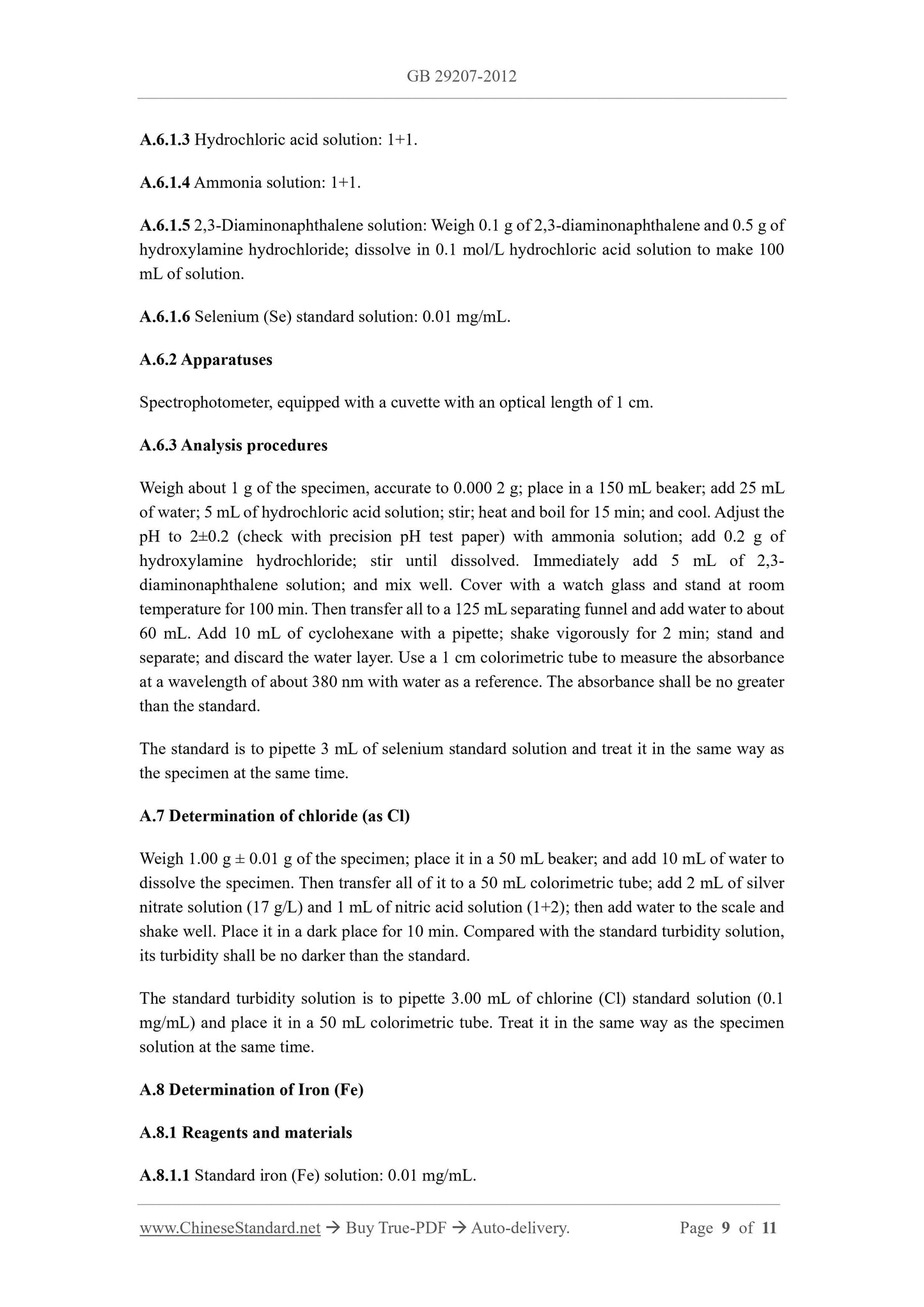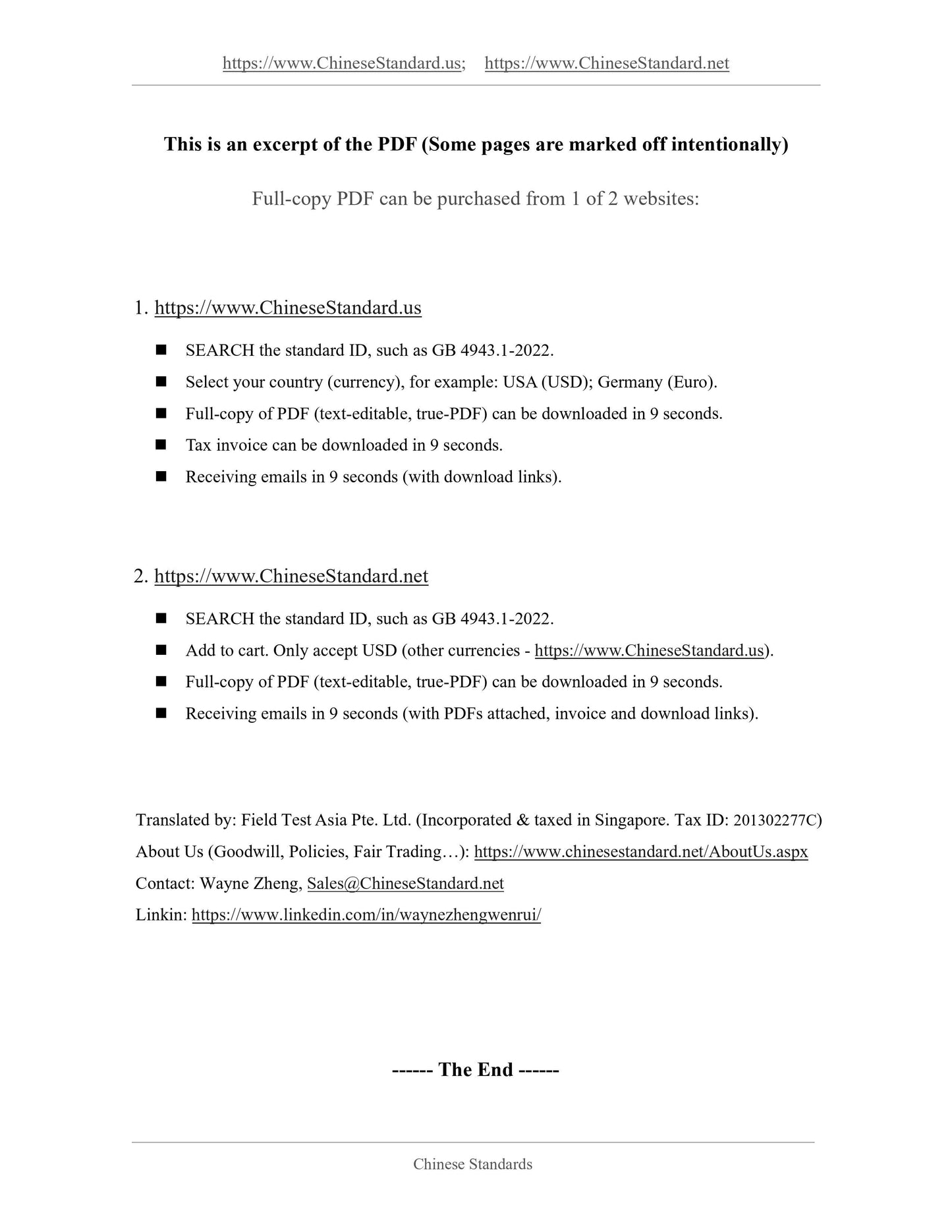1
/
of
8
www.ChineseStandard.us -- Field Test Asia Pte. Ltd.
GB 29207-2012 English PDF
GB 29207-2012 English PDF
Regular price
$155.00
Regular price
Sale price
$155.00
Unit price
/
per
Shipping calculated at checkout.
Couldn't load pickup availability
GB 29207-2012: Food additive magnesium
Delivery: 9 seconds. Download (and Email) true-PDF + Invoice.Get Quotation: Click GB 29207-2012 (Self-service in 1-minute)
Newer / historical versions: GB 29207-2012
Preview True-PDF
Scope
This Standard applies to magnesium sulfate, a food additive produced from natural magnesiumcarbonate (magnesite), sulfuric acid, magnesium vanadium sulfide and seawater.
Basic Data
| Standard ID | GB 29207-2012 (GB29207-2012) |
| Description (Translated English) | Food additive magnesium |
| Sector / Industry | National Standard |
| Classification of Chinese Standard | X40 |
| Classification of International Standard | 67.220.20 |
| Word Count Estimation | 8,892 |
| Regulation (derived from) | Ministry of Health Bulletin 2012 No. 23 |
| Issuing agency(ies) | Ministry of Health of the People's Republic of China |
| Summary | This Chinese standard applies to natural magnesium carbonate (magnesite) and sulfuric acid, sulfur, vanadium and magnesium seawater as raw food additive magnesium sulfate. |
Share
